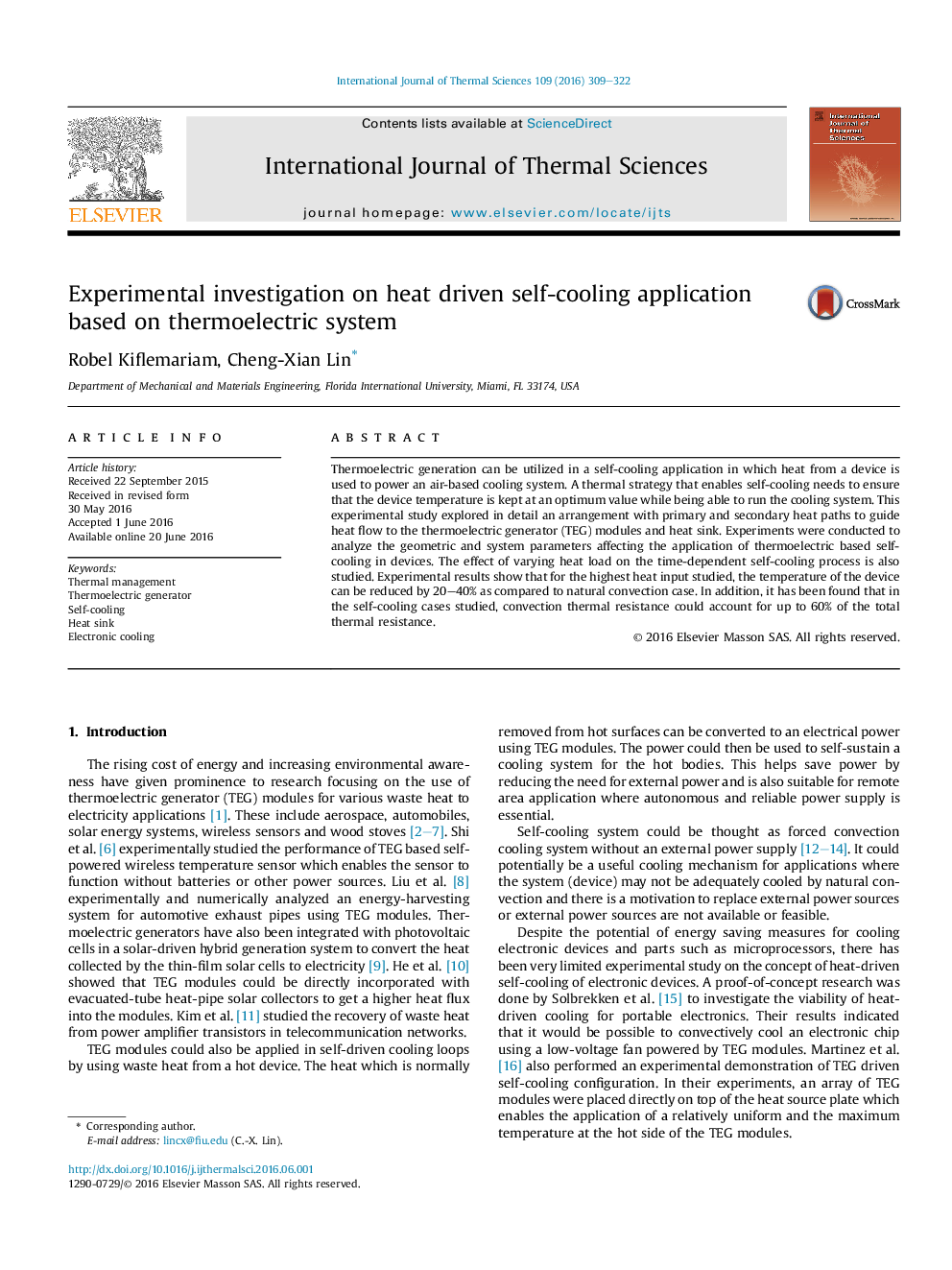| Article ID | Journal | Published Year | Pages | File Type |
|---|---|---|---|---|
| 668946 | International Journal of Thermal Sciences | 2016 | 14 Pages |
Thermoelectric generation can be utilized in a self-cooling application in which heat from a device is used to power an air-based cooling system. A thermal strategy that enables self-cooling needs to ensure that the device temperature is kept at an optimum value while being able to run the cooling system. This experimental study explored in detail an arrangement with primary and secondary heat paths to guide heat flow to the thermoelectric generator (TEG) modules and heat sink. Experiments were conducted to analyze the geometric and system parameters affecting the application of thermoelectric based self-cooling in devices. The effect of varying heat load on the time-dependent self-cooling process is also studied. Experimental results show that for the highest heat input studied, the temperature of the device can be reduced by 20–40% as compared to natural convection case. In addition, it has been found that in the self-cooling cases studied, convection thermal resistance could account for up to 60% of the total thermal resistance.
